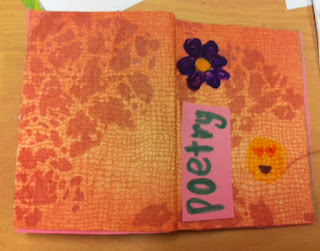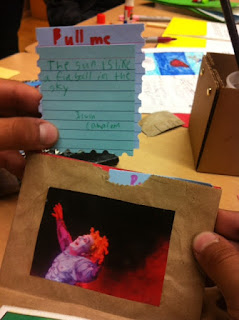[Click on any image for larger view.]
| Bronco Buster |
Denver may no longer be a cow town but it certainly is a horse town. From early cattle drives to the National Western Stock Show to the Denver Broncos, horses apparently have played an important role in the city's history. One well-known downtown bronze statue (Civic Center Park) is the Bronco Buster, by Alexander Phimister Proctor. The piece dates from 1920 (original displayed at the Chicago Columbian Exhibition of 1893.) The model for the rider was Bill "Slim" Ridings, who was arrested for horse rustling during the modeling. Proctor bailed out his model so the work could be finished. I don't know if Slim beat the rap or ended up wearing a rope necktie.
| Bucky |
Bucky the Bronco is a 1600 pound, 27 foot giant created from a mold of that world famous cowboy movie star, Trigger. Roy Rogers himself gave permission for a mold of the horse's remains (which one could visit at the Roy Rogers - Dale Evans Museum in Branson, Missouri, before it closed.) Roy's only condition was that the Denver horse couldn't be named Trigger. "Bucky" won a Denver Post contest. Bucky? (Some insist it's "Bucko.")
Bucky may be famous, but the great blue horse at Denver International Airport (DIA) is infamous. People love or hate this statue - middle ground is rare.
| Blue Mustang |
Blue Mustang is a fine example of the work of Luis Jiménez, a Chicano artist born in El Paso. Unfortunately, Jiménez was killed in his studio in Hondo, NM, in 2006 when a large section of the statute fell on him and severed an artery in his leg.
People call the art "demon horse," cursed, and diabolical. Campaigns have been organized to remove the statue. Not only did it kill its creator but it also cost the city $650,000, more than double the original price. On the other hand, the blue horse recently was appraised at $2 million.
Consider that the horse greets new arrivals at the airport. Is the message too subtle?
| Big Blue Bear |
 |
| East 2 West Source Point |
Still downtown, stroll past the Webb Municipal Office Building and study the work of Larry Kirkland. The piece has a Latino flavor -- could be the profile, could be the plumb bob, a worker's tool.
Back to DIA - there's tons of art inside the terminals, well worth the time to track down. And if you like conspiracies, you'll love the ones that have sprung up about the airport, including two particular airport murals.
| In Peace and Harmony With Nature |
The Children of the World Dream of Peace and In Peace and Harmony with Nature, both of which are found near the baggage claim area, were painted by Chicano muralist Leo Tanguma. There are several complicated theories about these works, most of which purport to explain the "evil" and "doomsday" hidden meanings of the murals. You can easily find the conspiracies on the Internet. Do a search for "DIA art conspiracy" and you'll get plenty of hits. I won't repeat the theories here. Much to Tanguma's credit, he hasn't become embittered because of the negative press. Check out an interview with him at this link.
Meanwhile, in the city proper, I've got my own conspiracies to worry about. What is the true nature of the cabal of unscrupulous developers, sketchy marijuana entrepreneurs and greedy politicians that is behind the destruction of the Denver we used to know, and the nightmare vision of the future symbolized by Lego architecture, massive traffic jams, overpriced beer, and erasures of history, culture, and art? Or is it just progress?
For example, two murals (since at least 1980) by artist Jerry Jaramillo once graced the corner of Forty-first and Tejon: Primavera and Mother Earth. Only Mother Earth remains. Primavera was destroyed in 2014 and replaced with a blank brick wall for a remodeled building that still stands empty. I've never heard a good explanation for the destruction of the art.
 |
| Mother Earth |
On the other hand, new exciting art seems to appear overnight, often in the middle of gentrifying neighborhoods, almost as though the artists want to present counter perspectives on what's happening to the neighborhoods. From the Art District on Santa Fe to RiNo (River North) to the light rail corridor, artists make their presence known.
At the entrance to one of Denver's remaining working class communities, Westwood, Carlos Frésquez has incorporated diverse symbols to tell the neighborhood's story, from music to a shovel to papel picado. Carlos has shown his work around the world. He's one of the country's major artists, and a highly influential Chicano cultural warrior.
| Morrison Road |
 |
| Another View of Morrison Road Sculpture |
Emanuel Martinez is also world-class. He was one of the original Denver Chicano muralists and today he's busy with art projects around the country, several involving incarcerated youth. Denver is blessed with many of his works on view in our parks, office buildings, schools, walls, etc. At the Tenth and Osage light-rail station you can find this beautiful example of his talent.
 |
| Mestizaje |
Murals continue as a major source of public art. The commercial explosion of the former skid row, along world-famous Larimer Street, has offered multiple opportunities for massive works of art on the walls of old buildings housing new restaurants, bars, and marijuana stores. You can see many examples on web sites such as The Denver Public Art Collection, River North Art District, or click on "images" when you search RiNo.
I don't know the name of this piece, found in the 2500 block of Larimer, but it's by Mariano Padilla (with help from "Allison.") You can find Padilla's work in Buenos Aires, Mexico, various U.S. cities, and right here in simmering Denver. More examples on the artist's web site.
 |
| Mariano Padilla |
 |
| Javier's Diner |
 |
| Burrito Giant |
 | ||||||||||
| The Other CHAC |
Some artists paint their murals indoors. Arlette Lucero painted this for the library at the Escuela de Guadalupe. She has several more examples of her excellent work on her web site.
A quote from the artist: I love finding myself knee deep in paint, art supplies and recycled materials listening to the laughter of many children as they and I go about our business of transforming internal imagination into something to see, hold and maybe play with.
 |
| Compassionate Leaders |
I'll close this quick tour with a couple of views of some rather static artistry -- but, in these cases, the message is the main thing. Denver has a César Chávez Park, on Tennyson, not too far from Javier's Diner. The park sits in the middle of a street that has changed from a worn-out barely-surviving strip of second-hand stores, diners, a failing bowling alley, and an empty hardware store, into a stretch of cute boutiques, expensive restaurants, craft beer joints, and a cool book/bar. Kind of like the rest of Denver. Along one edge of the otherwise nondescript park you can find a wonderful bust of Chávez, by the aforementioned Emanuel Martinez, and concrete inscriptions of a few of the inspiring words that came out of the struggle for farmworkers' rights. Take a look.
 |
| César Chávez |
 |
| The Fight Is Never About Grapes or Lettuce. It Is Always About People. |
 |
| Si Se Puede! |
I've hardly scratched the surface of examples of great Denver public art. There are hundreds, if not thousands, more. Eye-catching images. Groundbreaking techniques. Young artists at the beginning of their creative lives; old timers still trying to capture that perfect combination of light, color and form. Take a walk. Look at the walls.
Later.
Manuel Ramos is the author of several novels, short stories, poems, and non-fiction books and articles. His collection of short stories, The Skull of Pancho Villa and Other Stories, is a finalist for the 2016 Colorado Book Award. My Bad: A Mile High Noir is scheduled for publication by Arte Público Press in September, 2016.


























